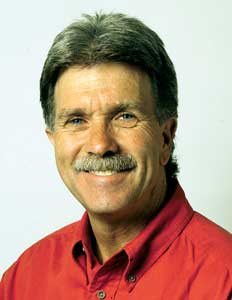It is estimated that 100 parks will be closed. Henry Coe State
Park in on a preliminary list, and is likely to be on the final
list, of parks to be closed
No part of our world that is touched by public funding has escaped the financial crisis and its far-reaching ripples. California’s Department of Parks and Recreation is no exception.
To understand American history and the American people, one must discuss wilderness. Its promise of opportunity and a fresh start pulled us from Plymouth Rock to the Sierra goldfields. The lure to a romantic and idealized “West” in large part shaped our nation and our character. Today, the wilderness that was once all around us is now largely contained inside boundaries on maps to be managed by some government agency and leaving its fate dependent on state or federal budgets.
California DPR, a department that has been underfunded for decades leading to a massive backlog of deferred maintenance, has been cut another $14.2 million in the current budget. It is estimated that 100 parks will be closed. Henry Coe State Park in on a preliminary list, and is likely to be on the final list, of parks to be closed.
When I consider the idea of closing Henry Coe, a million questions come to my mind. How do you close an 87,000-acre (136 square miles) area? How do you keep out unscrupulous hunters and campers? This massive park is run by four employees — two rangers and two maintenance people. How much will these salaries ease a $20 billion budget deficit? A skeleton staff might be kept for security and maintenance. So, how much is really being saved — especially considering the fact that a closed park will receive no income from day-use fees? Personnel will need to be reassigned. I am told this is a 12- to 18-month process. So, how long will closures take and when will savings begin?
The fact is that many of the answers to these questions are a mystery to upper echelon state parks’ personnel. Much of the information they are receiving is contradictory and just doesn’t add up. There is much to be decided, but there is no question that the situation is dire and parks will surely close.
To politicians in Sacramento, those of us who cherish parks and open space are just another interest group fighting for limited resources and lamenting the shortage. I long for the day when we do not have to lobby politicians for adequate funding for parks; for a day when parks are seen as a necessity rather than a superficial luxury.
Recent legislative proposals to add $10 or $15 to your annual auto registration fee for parks have been killed. This fee, not much more than a newly raised state park day-use fee, would entitle you to free use of all state parks. It would have fully funded state parks and removed them from annual budgetary wranglings. Deferred maintenance of aging park facilities could begin.
Fully funded parks for the cost of three lattes? I’m in.
I like to tease that Henry Coe is a lot of nothing — endless miles of it. In our busy and distracted lives, it is easy to forget the restorative qualities of time spent amid endless miles of nothing. But forgotten or not, there is no therapy for the soul better that a day in the open. We look for those open places in parks. If Henry Coe closes, how do we measure the loss?
They are your parks. You own them. If you’re riled, let them know you want access to your parks and that they are important to you. Visit the California Parks Foundation Web site (http://www.calparks.org/). They will show you the way.








